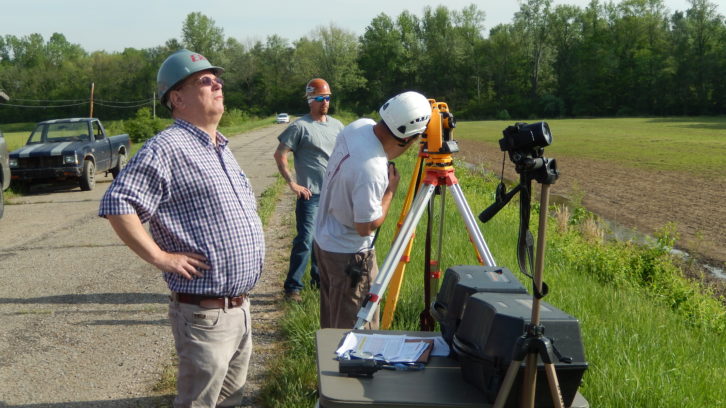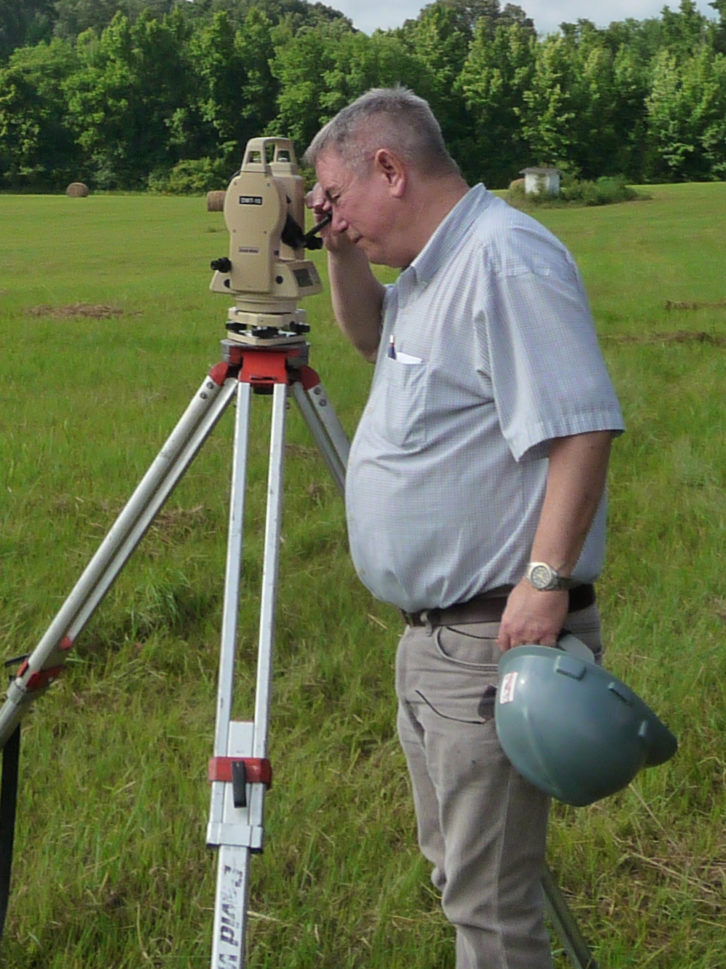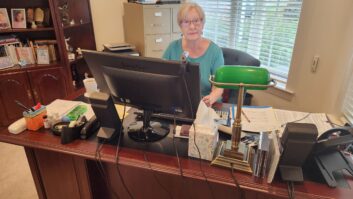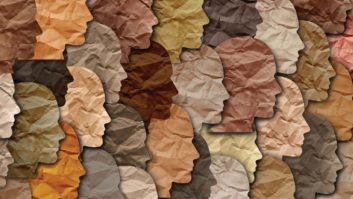In the ever-changing world of broadcast engineering, competent tower design and structural safety remain a priority for all terrestrial operators. Creating safe, long-lasting and effective structures can be a challenge for any broadcast solutions group.
That’s certainly true for Electronics Research Inc., a familiar name in the niche field of antenna systems design and broadcast tower construction.
Enter industry veteran John Robinson, P.E. He is a true antenna tower specialist with more than 30 years of experience in this sector.
In January, Robinson rejoined ERI as its vice president of structural engineering, coming from consulting firm Hodge Engineering, where he had been principal engineer for the tower group. In his earlier, 23-year tenure at ERI he was senior engineer of the structural division.
Prompted by the hiring announcement, Radio World caught up with him to learn about his background and thoughts on this specialized part of our specialized industry.
Safety first
Robinson began his professional journey in 1977, graduating from the University of Evansville with degrees in civil and mechanical engineering. He later earned his master’s in mechanical engineering.
He started out working in the coal industry, designing conveyor systems and storage structures. Later he moved on to designing fire safety systems.
Robinson was an early user and developer of Fortran software that would later become the foundation for the widely used tnxTower tower design platform published by Tower Numerics Inc. This gave him an edge when it came to understanding how computers could help influence traditional industrial design processes when developing broadcast radial solutions.
Beginning in 1985 he started working with the late, legendary engineer Ernie Jones designing and analyzing towers. In 1994, he first joined ERI, designing and constructing broadcast towers for the company’s Structural Division.
Over the years Robinson has been directly involved in a number of major tower site projects, ranging from large AM arrays and very tall structures in the American Midwest to towers located on building rooftops such as the 4 Times Square complex in midtown New York and the Hancock Building in Chicago.
Always keeping a mindful watch on safety, Robinson said he has sought to manage projects with the same methodical approach each time, using industrial-construction best practices combined with cutting-edge software to achieve efficient results.
He describes walking a fine tightrope between creating long-lasting, durable structures while keeping each project ahead of schedule and under budget.
Today he is a registered Professional Engineer in Indiana and 17 other states. He also is a member of the American Society of Civil Engineers and the TIA’s TR-14 Engineering Committee for Structural Standards for Communication and Small Wind Turbine Support Structures.
One major cornerstone of Robinson’s engineering methodology is designing structures that can maximize capacity while staying within safety parameters for wind load and sheer strength. He prioritizes safety over speed and said he will never compromise his fundamental training or instincts, as this can lead to tower crew injury and death.
[Visit Radio World’s News and Business Page]
Checking it twice
Robinson recommends double and triple checking the output of the software calculations to make sure that everything is in line with the required parameters, minimizing the risk of structural failure.
This is a core component in line with his training as a structural engineer. He is also an expert on the latest telecom industry standards and recently helped shepherd companies into the latest ANSI/ASSP A10.48 and TIA-222-H standards.
“Computer software and the use of computer functions are essential to calculate a guyed tower to maintain standard,” he said, especially as the ASCE and TIA update their codes and requirements to meet the shifting terrain of the industry.
A thorough understanding of the TIA-222 Standard, specifically the checking of construction loads on towers, is critical.
According to Robinson, you can never underestimate factors such as wind loading, guy wire tension and soil composition, as any miscalculation in these areas can lead to structural failure.

Proper antenna installation procedures also need to be followed to the exact parameter, from gin pole mounting to crane operation, or else the process can cause instability, tower failure and crew injury and death.
“Defining responsibilities for everyone on the project is key to maintaining safety,” he said. “If you’re putting up a gin pole and you’re going to lift 30,000 pounds, you need to go through all of that to make sure everyone on the team knows what their specific function is.”
We asked him how dynamic industry regulations are evolving the face and shape of the business.
He says that a variety of factors are changing the way towers are built and regulated, ranging from environment concerns such as impacts on bird populations, usage and demand shifts.
Robinson feels that with the rapid growth and expansion of cellular technology, there is less of a need for the traditional tall tower to broadcast long-range over-the-air signals for television and FM radio.
However, these technologies remain at the forefront of communication and information during disaster and emergency situations because of their reliability compared to the cell network. And that’s due in part to high standards for tower construction, transmission system redundancy, power generators installed at the transmitter sites and the long distances at which OTA signals can travel from a single point.

“What do you do when a tornado comes through? You look for your local TV or radio station to get the information,” he noted.
Indeed, this usage scenario is causing regulations to become more stringent for taller structures, as they remain the most effective line of communication in a disaster situation.
According to Robinson, a major challenge is when a company like ERI is asked to change the structural composition of a tower to accommodate hardware outside the original scope of its design.
“When you have to go in and reinforce a tower, it becomes a tedious job, especially if there are a large number of appurtenances on the structure and the site terrain requires consideration of topographic conditions.” he says.
It is important for modern structural engineers to understand how to revise loading on guyed towers. Fabrication, material quality and the demands of each location are also central components of structural reliability.
“A tower in the Midwest located in Tornado Alley will require different bracing for wind loading than a tower located on a rooftop on the East Coast.”
Finding the right balance of materials and design will assure proper structural performance, maintenance and cost.
Good records
We asked if he has recommendations for engineers who may not be entirely up to speed on the latest tower safety procedures and regulations.
Robinson says be sure to have copies of your tower structural records and drawings of existing structures available at the main office or transmitter building for easy reference.
“The most important thing a broadcast station can do is maintain good records of the antennas, transmission lines and other items that are on a given tower,” he said.
“The information on file should include weight and wind area and an accurate record of each item’s location on the tower. If this information is readily available, it will save time and money when a tower needs to be analyzed for equipment that is being added, replaced or upgraded.
“A tower map is key. The station engineer needs to understand what elements are physically located on the tower and what their operating parameters are.”
Robinson recommends performing regular visual inspections of the tower and surrounding site. Some warning signs may be right in front of you: a tower out of plumb or guy wires sagging. Addressing such issues can be crucial to avoiding structural damage or failure.
Other simple but important issues to watch for include cracked foundation anchors, deteriorating brackets and corroded tower structural components. Such hazards can be identified easily through visual inspections.
“Brilliant”
Looking towards his future at ERI, John Robinson is excited for the challenges that await him.
ERI’s Structural Engineering Group has four members, two of which are Registered Professional Engineers. He hopes to expand this team, further develop the talent of its personnel and focus on departmental efficiency.
He feels that quicker turnaround of structural analysis can help increase project performance and improve the quality of customer service.
While this will be a difficult undertaking, especially as the industry faces changing regulations and staffing shortages, he has the support of senior management in this new endeavor.
“John is a brilliant and highly qualified tower design engineer,” said ERI Vice President of Marketing Bill Harland.
“His background working for a structural engineering consulting firm, experience designing antenna support spines, structural analysis, structural reinforcement design and knowledge of fabrication processes and procedures make him an excellent leader of ERI’s Structural Engineering Group.”
Author Andy Gladding is chief engineer of Salem Radio Network’s New York cluster.












